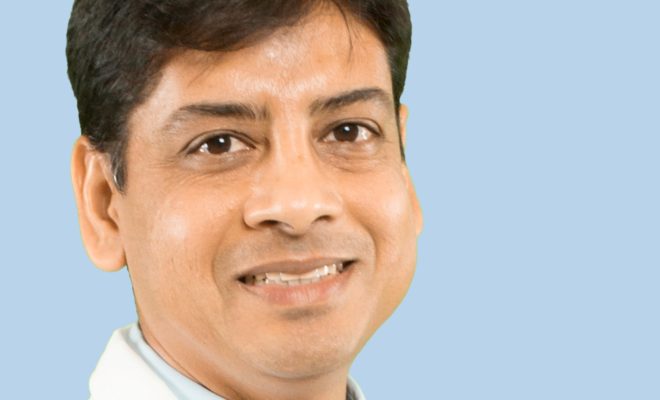
People & Business
Coastal Orthopedics’ Shoulder and Elbow Specialist has Research Published
Dr. Avi G. Kumar, a shoulder and elbow specialist with Coastal Orthopedics, was one of six physicians nationwide whose scientific research on reverse shoulder arthroplasty, a prosthetic replacement surgery, using a lateralized glenoid sphere was recently published in the Journal of Shoulder and Elbow Arthroplasty.
The select physicians were chosen to validate the results of reverse shoulder arthroplasty utilizing this specialized design. Reverse shoulder arthroplasty is a backward ball, and a socket prosthetic joint is often used to treat patients with osteoarthritis and rotator cuff tears using implants that place the center of rotation either inside or outside the glenoid (socket) bone. The goal is to improve active external rotation and decrease scapular bone notching.
“Reverse shoulder arthroplasty has revolutionized the treatment of patients with advanced degenerative shoulder arthritis with rotator cuff tears,” said Dr. Kumar. “It is being used with increasing frequency in patients with large rotator cuff tears unsuitable for repair and also for complex fractures of the upper part of the humerus.”
The multicenter study included 245 patients, ranging from 60 to 92 years of age. Patients underwent reverse shoulder arthroplasty for cuff tear arthropathy — severe shoulder arthritis in the setting of a large rotator cuff tear. The study also contained patients with rotator cuff tear with instability or escape and without shoulder arthritis or ailed prosthetic shoulder arthroplasty. Patients were enrolled into the prospective clinical study at one of nine sites between December 2009 and July 2012.
Dr. Kumar performed the procedure using the specialized single implant design characterized by a lateralized glenoid sphere. In this design, the center of rotation is outside the glenoid bone, which tenses the residual rotator cuff and optimizes the function of the deltoid muscle.In the procedure, a spherical metal implant is placed into the glenoid bone and a stem with a socket is placed in the upper humerus.
Patient data was gathered before surgery, as well as 3 months, 6 months, 1 year and 2 years after surgery. Measurements related to active and passive range of motion, external rotation and internal rotation were collected during each clinical examination. In the study, physicians saw improvements in range of motion and outcomes, irrespective of
the patient diagnosis and improvements in external rotation. Patients continued to improve throughout the study time periods.
A board certified orthopedic surgeon, Dr. Kumar
is fellowship trained in shoulder and elbow surgery, specializing in traumatic, acute and chronic injuries of the shoulder and elbow. He has been performing the reverse total shoulder replacement since joining Coastal Orthopedics in 2004. Dr. Kumar has performed more than 1,000 total shoulder replacements, with a success rate of more than 90 percent.
Dr. Kumar has received several U.S. patents for his innovative ideas. In December 2016, Dr. Kumar secured a patent for an Anatomical Humeral Fracture Plate, an implanted medical device that is contoured for the shoulder and designed to provide better fixation for the different fracture patterns. Specialized screws are mated to the plate to stimulate natural callus healing. Dr. Kumar anticipates that patients with this medical device will have better and faster healing of upper humerus fractures.
Dr. Kumar had another patent approved in June 2019 for a cutting-edge medical device, which he believes will enable surgeons to repair large rotator cuff tears as an alternative to reverse shoulder replacement surgery.



You must be logged in to post a comment Login